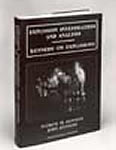All Articles
Accounting
Food & Beverage
Addiction Issues & Substance Abuse
Hazardous Materials
Anger Management & Related Issues
Healthcare
Appraisal & Valuation
Human Factors
Audio Forensics
Intellectual Property
Automotive - Vehicular
Internet Marketing
Biokinetics
Law Enforcement
Blockchain Information
Linguistics
Branding - Brand Management
Logistics - Reverse Logistics
Business Management
Machinery
Computer Forensics
Marketing
Corrosion
Meditation
Cosmetology: Hair / Makeup
Mining
Crime Scene Investigation
Neuropsychology
Criminology
Pharmaceuticals
Design
Pharmacy & Pharmacology
Digital Forensics
Plastic / Reconstructive / Cosmetic Surgery
Documentation Examination & Analysis
Pools and Spas (Recreational)
Economics
Product Liability
Education & Schools
Risk Management
Elder Abuse
Security
Ethics / Ethical Duties
Sexual Abuse - Molestation - Harassment
Exercise & Fitness
Slip, Trip & Fall
Family Issues
Transportation
Finance
Warnings & Labels
More...

APPRAISAL-VALUATION-PAGE ARTICLES MAIN PAGE
. Contact Us if you are interested in having your work published on our website and linked to your Profile(s).
All Articles
Accident Prevention & Safety
Forensic Analysis
Addiction Issues & Substance Abuse
Healthcare Facilities - Hospitals
Alcohol, Tobacco & Other Drugs
Hotels & Hospitality
Anger Management & Related Issues
Industrial Hygiene and Safety
Archaeology - Archeology
Injury
Audio Forensics
Insurance
Biokinetics
Intellectual Property
Branding - Brand Management
Jails - Prisons - Correctional Facilities
Business Consulting
Land Mapping - Surveying - Zoning
Computers
Legal Issues
Corrosion
Manufacturing
Crime Scene Investigation
Marine - Maritime
Dental - Dentistry
Marketing
Digital / Crypto Currency
Mediation
Domestic Violence
Medical - Medicine
Economics
Oil & Gas
Education & Schools
Pharmaceuticals
Elder Abuse
Pharmacy & Pharmacology
Elevators - Escalator - Automatic Doors
Police Practices & Procedures
Energy - Utilities
Politics
Engines (Combustion - Diesel)
Product Liability
Expert Witnessing
Professional Skills
Failure Analysis
Terrorism - Homeland Security
Finance
Warnings & Labels
Fires & Explosions
Yoga
More...
Featured Articles
There are no active articles here at this time. Please use the search bar, try another category, or contact us if you would like to contribute an article.
This Article is unavailable. Contact Us
Search articles by title, description, author etc.
Sort Featured Articles
Featured resources
Functional Restoration of Adults and...
by Diane Atkins, OTR, et al
Brute Force: Cracking the Data...
by Matthew Curtin
Explosion Investigation and Analysis:...
by Patrick M. Kennedy, John Kennedy
Follow us










